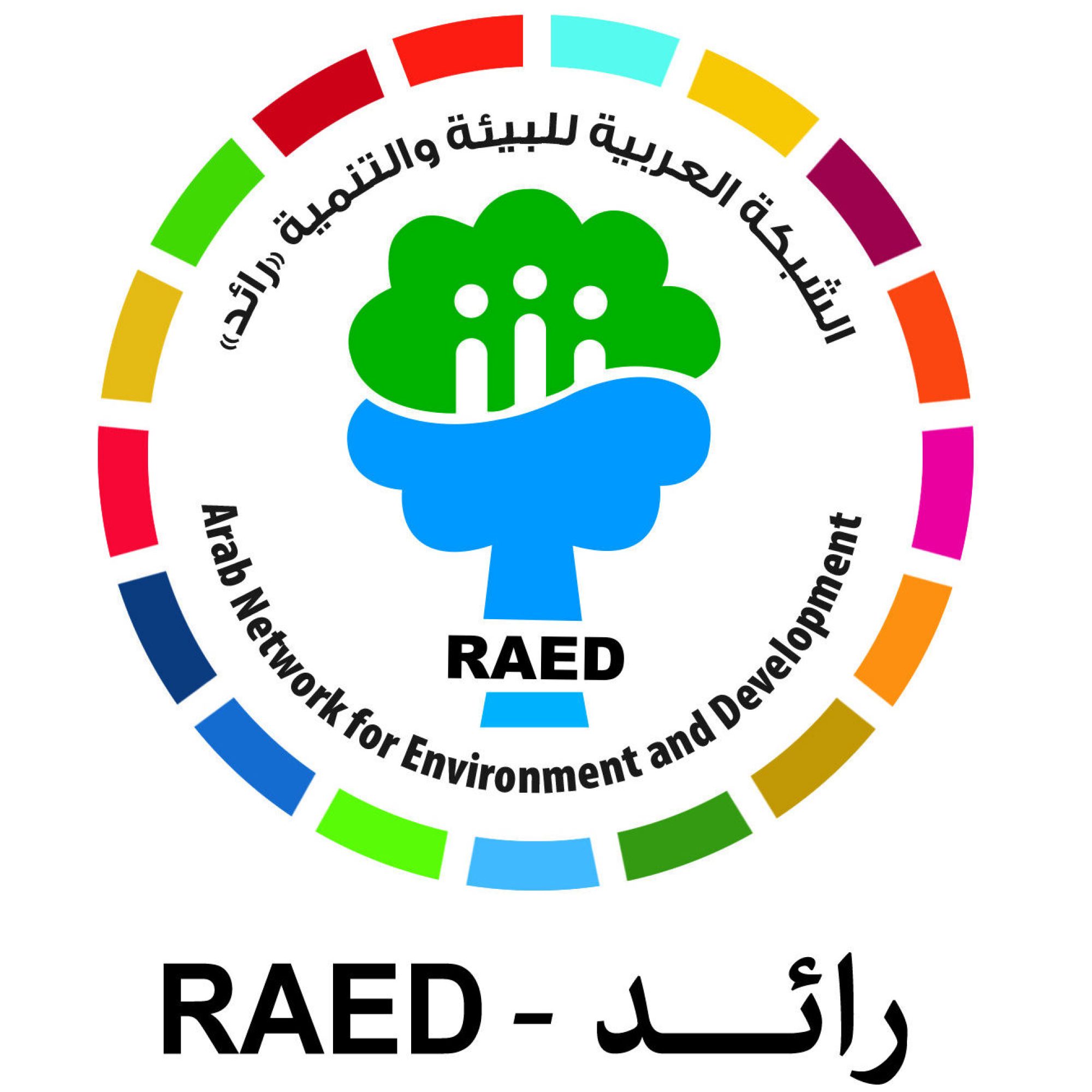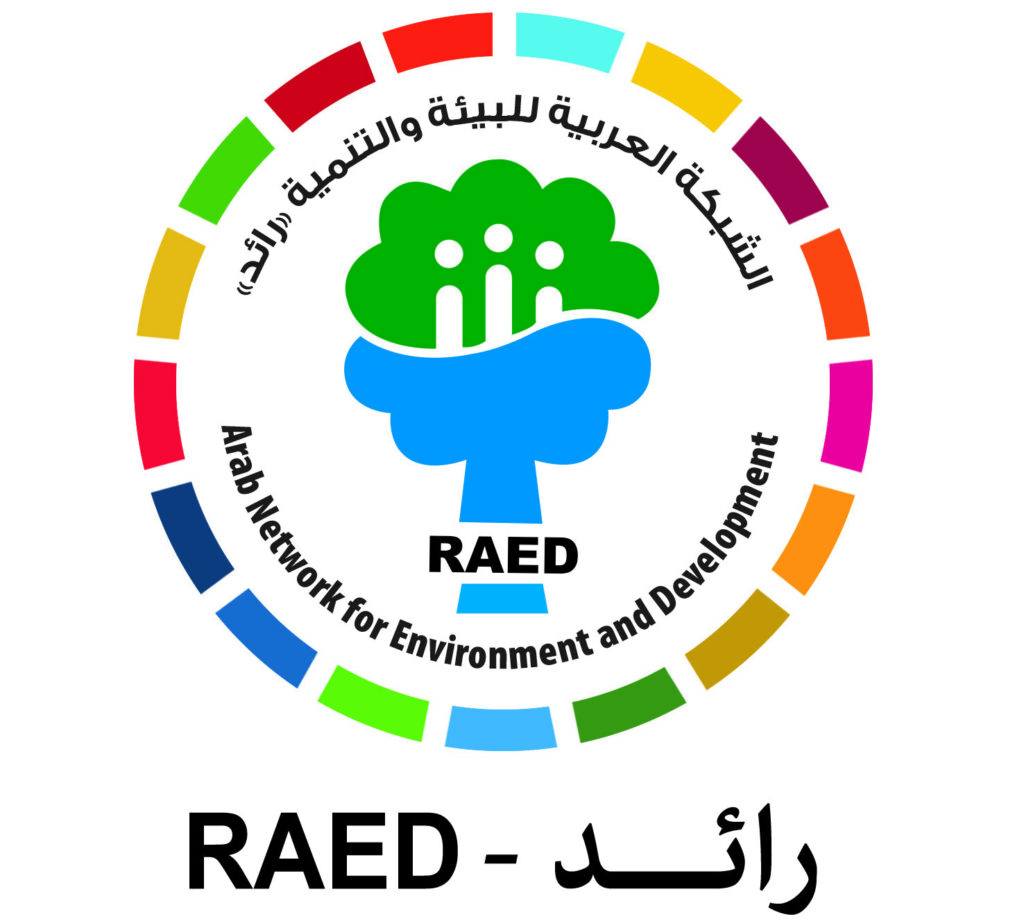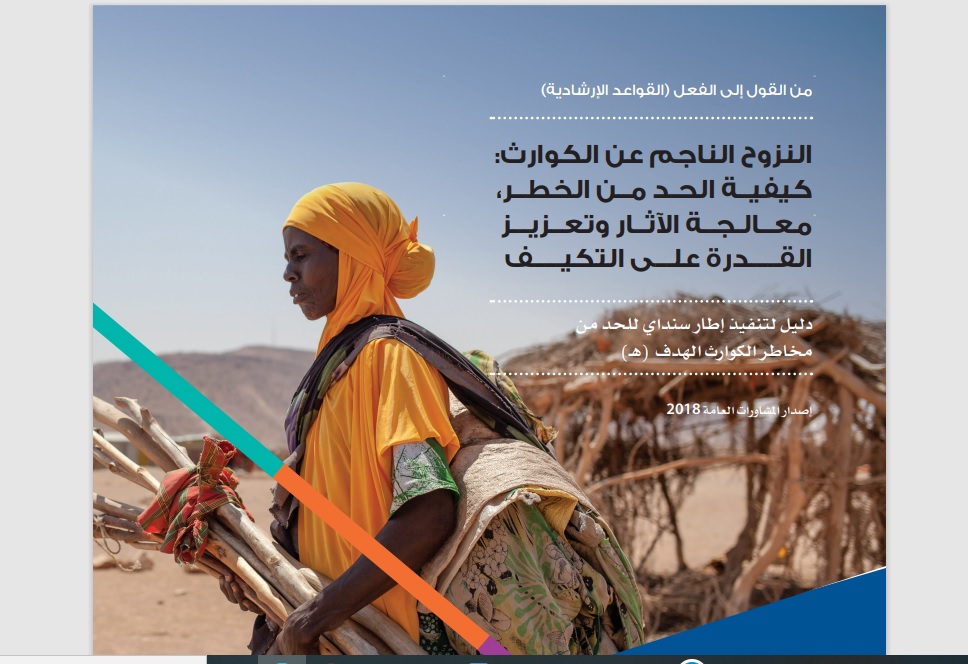From words to action.. RAED launches an Arabic version of the guidance manual for displacement resulting from disasters
In cooperation with the United Nations Office for Disaster Risk Reduction, and within the framework of supporting the “Sendai Framework” for disaster risk reduction, the Arab Network for Environment and Development “Raed” launched the Arabic version of the guideline on the fifth goal, which is concerned with displacement resulting from disasters. The guideline includes The guideline, which was titled “From Word to Action,” introduces how to reduce the risk of displacement resulting from disasters, address the effects, and enhance adaptive capacity.
Dr. Imad El-Din Adly, General Coordinator of the “Raed” Network, stressed that the development of the “From Words to Action” guide on displacement resulting from disasters came as a joint collaborative effort, led by the Norwegian Refugee Council, and funded by the German government, in order to ensure that reduction strategies include: One of the risks of future disasters is the problems of displacement resulting from disasters, as set out in the “Sendai Framework” for Disaster Risk Reduction (2015-2030), noting that the work team in this general guide included representatives of the German Foreign Ministry and the Displacement Monitoring Center. The Internal Security Council (IDMC), the Platform for Disaster Displacement (PDD), the United Nations Migration Agency (IOM), and the United Nations Refugee Agency (UNHCR), in addition to a team from the Arab Network for Environment and Development, which issued the Arabic version of the guide.
The Disaster Displacement Platform is an initiative led by the government of the country concerned with the problem, aiming to implement the recommendations contained within the “Nansen Initiative Protection Agenda,” which provides countries with tools to prevent, prepare for, and respond better to disaster-related displacement when people are forced to seek refuge. Another within their countries, or across international borders.
The Sendai Framework includes a number of measures related to human mobility, displacement, evacuation and resettlement, in the context of strengthening disaster risk management and investing in resilience and preparedness. In this context, and recognizing the importance of national legislation, the Sendai Framework proposes human mobility, displacement, evacuation and resettlement as a priority in developing normative tools. .
Forced displacement is considered one of the most harmful and immediate effects of disasters, and in some cases it occurs even before any danger occurs, so facilitating the movement of people to avoid being exposed to life-threatening situations, through planned evacuation or relocation, is one of the most effective ways to reduce deaths and injuries, without Being forced to flee home, especially when return is not possible for an unknown period, tends to increase humanitarian needs and exposes people to increased risks associated with their displacement, making them more vulnerable to future disasters.
Both short- and long-term displacement pose many challenges in terms of the provision of basic services, social cohesion, and individual and collective well-being. High levels of displacement impact sustainable development and undermine development gains on a broad scale, especially if they are not met. adequately meet the needs of those affected.
The Sendai Framework for Disaster Risk Reduction (2015–2030) recognizes disaster-induced displacement, meaning the forced or involuntary movement of people associated with disasters, as an important concern, and provides several opportunities to set targets for disaster risk reduction (DRR) strategies, which reduce of the risk of resulting displacement and related human suffering, in line with Goal 2 (B), to significantly reduce the number of people affected by disasters globally.
Although displacement cannot be avoided, the Framework for Action also specifies the necessary actions to prepare for responses, which reduce potential humanitarian needs and enhance the adaptive capacity of those affected, so that they can find an acceptable solution to their displacement. Addressing disaster-induced displacement is essential to achieving the principle (19 c), which recognizes that disaster risk management (DRM) aims to protect people and their assets in ways that preserve and promote all human rights.
This guide provides practical guidance to help government authorities integrate disaster-induced displacement, and other related forms of mobility, into regional, national, sub-national and local disaster risk reduction strategies, in accordance with Objective (e) of the Sendai Framework, to review or develop disaster risk reduction strategies. Disasters, it also provides background information and highlights the various roles that disaster risk reduction management can play in reducing, preparing for and responding to displacement resulting from disasters.
“Adly” indicated that the “from words to action” guideline aims primarily to support the work of a group of agencies, including regional, national, sub-national and local actors for disaster risk management, especially disaster management agencies, civil defense and emergency responders in responding to disaster risks. Disaster Risk Management, as well as national and regional governments, to ensure that policies for avoiding and managing displacement within and across borders are aligned in all relevant sectors.
The guide also aims to support the work of law authorities and national and sub-national policy makers, such as parliamentarians, in organizing the inclusion of measures to reduce and manage disaster displacement, as well as local authorities responsible for land use planning and urban development, to reduce vulnerabilities and exposure, which may lead to to displacement, and ensuring that the risks of displacement resulting from disasters are included in spatial development plans. Other parties may find this guide useful, such as international organizations, civil society, community-based organizations, academics and research centers.
The “From Word to Action” guide contains four parts. The first part addresses the purpose of the project, explains why disaster displacement is a global disaster risk reduction challenge, and provides an overview of how the Sendai Framework addresses this type of displacement. The second part provides guidelines for developing activities
The Framework’s four action priorities relevant to disaster reduction, preparedness and response at all levels are outlined, and effective practices are illustrated with examples and case studies.
The third part is an assessment tool that summarizes the most important activities to address disaster displacement, within the framework of local, sub-national, national, regional and global disaster risk reduction strategies, and aims to help users determine whether these strategies are consistent with the Sendai Framework on Disaster Displacement. , and assist in reporting indicators of the Sendai Monitoring Mechanism.
Part IV of the guide is an appendix that provides specific references to disaster displacement and human mobility in the Sendai framework, a list of key resources, a glossary of terms, cross-references to other words to scientific evidence, and an overview of how displacement and disasters of various types relate to global policies and processes.


